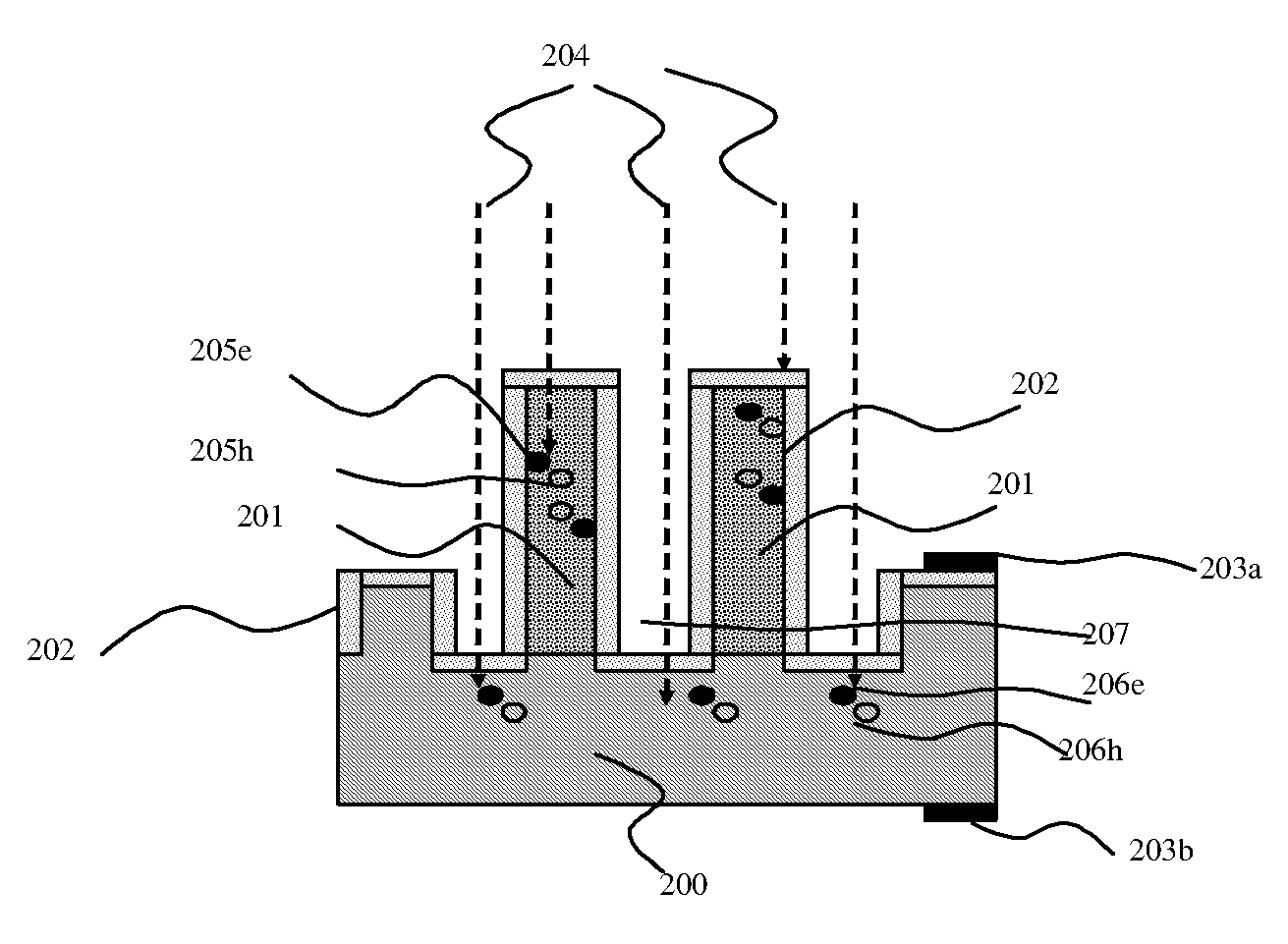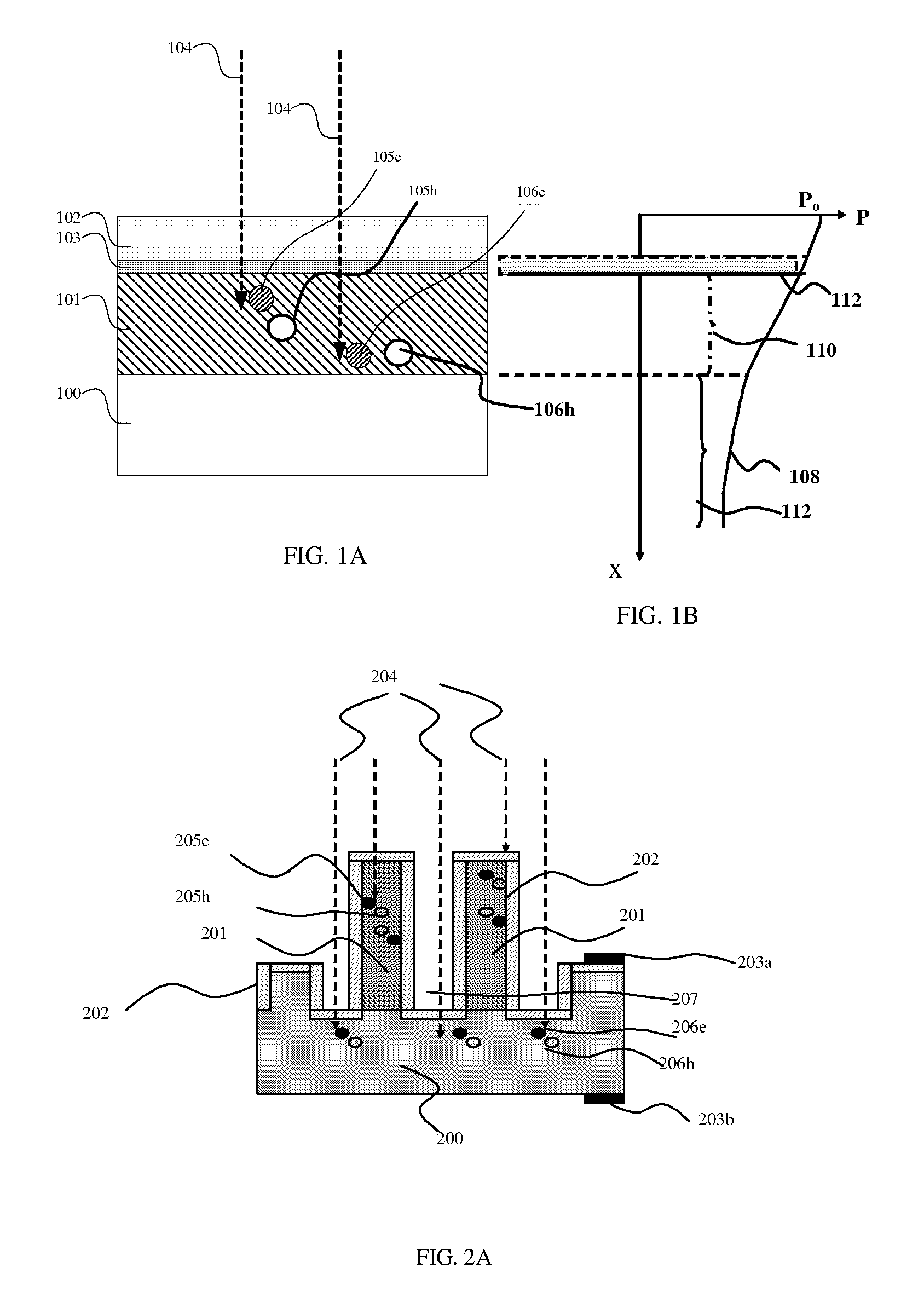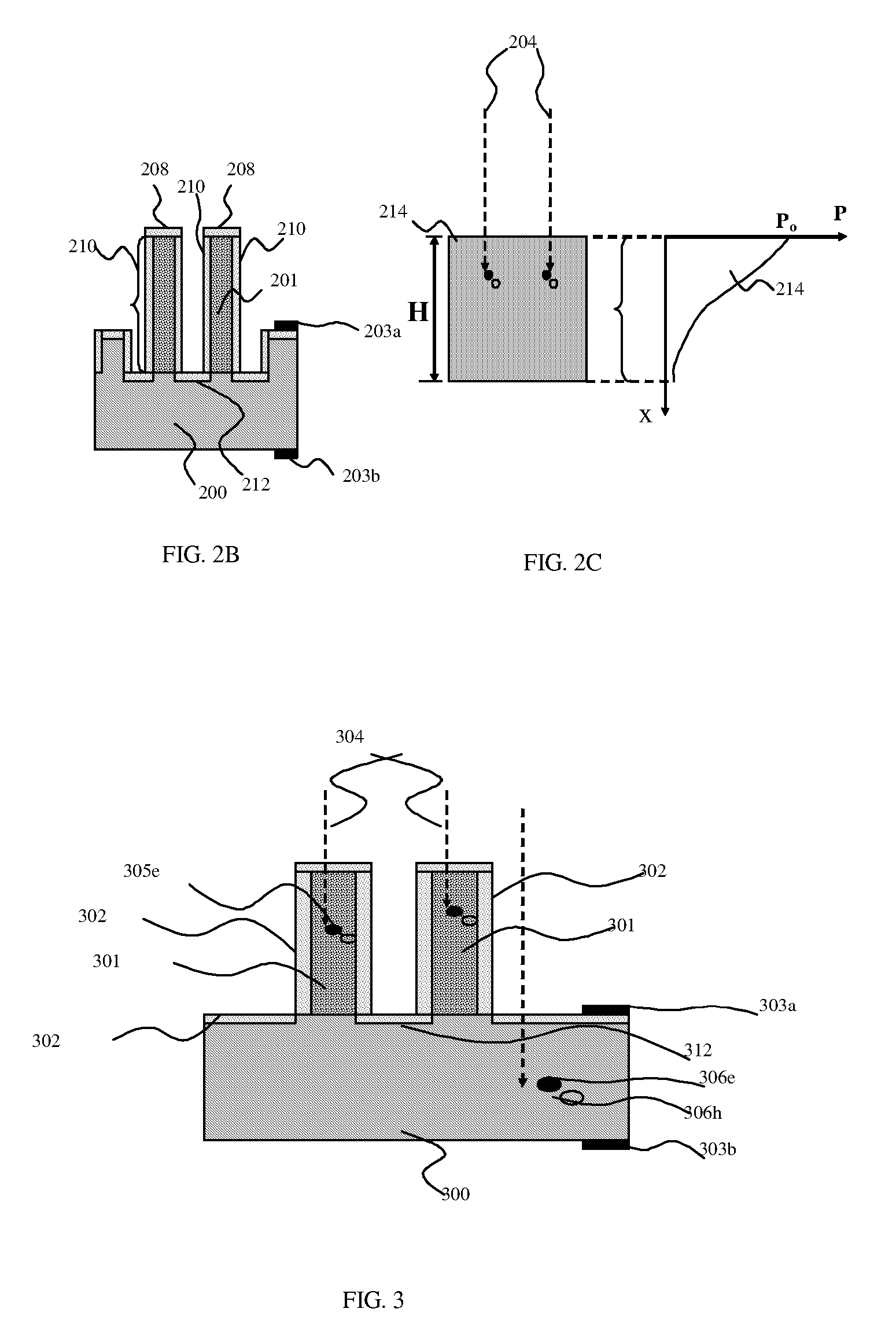Photovoltaic cells based on nano or micro-scale structures
a photovoltaic cell and nano- or micro-scale technology, applied in the direction of solid-state devices, electrical devices, semiconductor devices, etc., can solve the problems of reducing the conversion efficiency, the toxic nature of these materials is of great concern to the environment, so as to achieve the effect of increasing the power generation capacity
- Summary
- Abstract
- Description
- Claims
- Application Information
AI Technical Summary
Benefits of technology
Problems solved by technology
Method used
Image
Examples
Embodiment Construction
[0033]According to the preferred embodiment illustrated in FIG. 2A, a photovoltaic cell comprising of a plurality of nanometer(s) or micrometer(s)-scaled rods 201 is formed on the supporting substrate 200 (after having groove). The nanometer(s) or micrometer(s)-scaled rods 201 can have metallic electrical conduction, p-type or n-type semiconductor electrical conduction. The nanometer(s) or micrometer(s)-scaled rods 201 are further surrounded by an electronic material 202 having metallic electrical conduction, p-type or n-type semiconductor electrical conduction. The electronic material 202 can be a separate material or an electronic material of p or n type formed inside 201 and 200. The electronic material 202 and the supporting substrate 200 are electrically connected to electrodes 203a and 203b, respectively. The electrode 203a is intended to serve as a common electrode that connects all rods 201. The electrode 203a is provided for the electronic material 202. The electrode 203a c...
PUM
 Login to View More
Login to View More Abstract
Description
Claims
Application Information
 Login to View More
Login to View More - R&D
- Intellectual Property
- Life Sciences
- Materials
- Tech Scout
- Unparalleled Data Quality
- Higher Quality Content
- 60% Fewer Hallucinations
Browse by: Latest US Patents, China's latest patents, Technical Efficacy Thesaurus, Application Domain, Technology Topic, Popular Technical Reports.
© 2025 PatSnap. All rights reserved.Legal|Privacy policy|Modern Slavery Act Transparency Statement|Sitemap|About US| Contact US: help@patsnap.com



